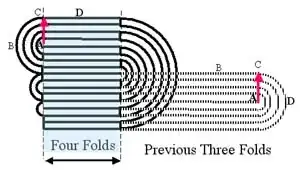Possible Duplicate:
Why can't a piece of paper (of non-zero thickness) be folded more than "n" times?
On skeptics.stackexchange, there is a question on the maximum limit on the folds of a paper. The referenced answer said that Britney Gallivan derived an equation to estimate the number of maximum folds possible for a given sheet of paper. The answer justified the 'only'-folding scenario but when the same scenario is changed to folding the paper preceded by tearing the paper off into two equal halves, it fails.
I tried to tear an A4 sheet off in two equal halves and kept on tearing it in two equal halves in alternate directions by first folding the paper and then tearing it. After the 7th tear-off, I found that I could still fold the paper for the 8th time. Applying the same reasoning here, the A4 should fail to fold for the 8th time but it doesn't. Why?
